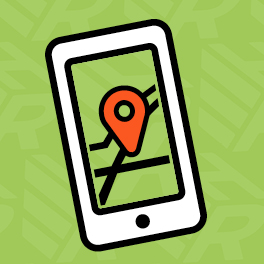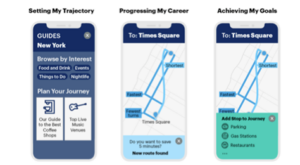
While January is a great time to set new career goals, February is the month to really make stuff happen. But where do you begin?
Just like planning how to get from A to B, treat your career journey like Google Maps. Lost? You won’t be for long. Here’s how to programme your career path to find the right route for you.
Why is career pathing important?
Career pathing helps you plan your career journey – and it’s something everyone can gain from. It provides direction, motivation and skill development, benefiting both people and businesses through strategic career planning.
It’s a win-win. Employees can better understand how they can grow to reach the next level. On the other hand, businesses get a better insight into where’s best to place talent.
What’s Google Maps got to do with it?
Traditionally career pathing has been seen as a ‘map’, but it should be more dynamic. Think about GPS, like Google Maps. You enter your destination and get multiple routes to choose from, all with timeframes and stops you can make along the way.
In contrast, printed maps are more work. They seem like there’s only one road to take and can’t update you on any real-time obstacles, or road changes you might get caught in. It makes it more difficult to pivot.
You want to take the road that’s best for you and your career. We just reckon it’ll be easier to ditch the map and use GPS instead.
How to career path using the GPS method
Career pathing isn’t a solo effort. To really set yourself on the road to success, you should talk to your manager so you can plot out the roads together. Similarly, if you’re in a leadership role, connecting regularly with your team members to keep on track of their career goals will not only make them feel supported, but also want to stick around too.
So, before you embark on this journey, here are a few things to keep in mind:
Plan your destination
To get to where you’re going, you need a destination in mind. It doesn’t have to be working horizontally to move up, it could be working laterally, like in a role that’s of similar responsibilities and pay, just with different duties. That’s great, as long as you have a plan in mind for where you want to be.
Test drive new opportunities
Just because you’re in one seat now doesn’t mean you can’t test drive others. Ask your manager to try out different roles in other areas so you can experience how one route compares with another. It could be the start of something awesome – or just a fun experience. You won’t know until you try.
Pick the route that suits
Like how GPS shows options that get you to the same place, no one’s experience of success is the same. Look around at your colleagues, and ask them about how they worked their way to getting the role they’re in now and their plans for getting to the next step. Take note of their journey, then it’s up to you to pick the route that suits you.
Re-route where necessary
Think it’s time to try something new? It’s never too late to re-route. With the pace the world is changing, new specialist jobs are appearing all the time. Ask around about different opportunities that might be coming up. Perhaps your skills are best suited for a role that hasn’t been designed yet… but you won’t know until you ask.

Source: Gartner
Don’t forget your support crew
The best way to keep the wheels turning on your new career path is to keep in touch your mentor. They can help guide you to all the information on upcoming courses, job openings or mentorship opportunities that can keep you on the right path – or set you on a new one.
How will you plan your roadmap?
Before you get stuck in, use the points above to figure out where you want to go. Need help to fill in the gaps? Chat to us about setting your career GPS in the right direction. Next stop: the road to success.

